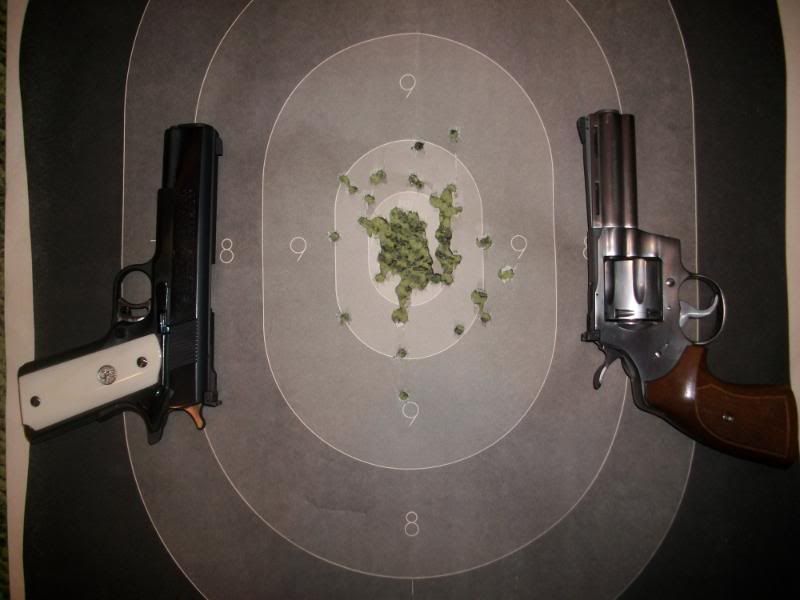First, let me say that I know that 50 feet is not a necessary distance to train at. When I shoot my ccw, I go to a pay-per-visit range, and shoot from 5 and 7 yard distances.
I haven't been shooting with any regularity for very long. Until recently, the farthest that I had shot a handgun from is 10 yards. A couple of weeks ago, I joined a gun club that allows me to bring my own ammo, and is substantially more cost effective, but extending targets to the backstop is mandatory. When I shoot there, I have to shoot from 50 feet away.
When I go to the gun club, I shoot at police/swat training silhouettes, because I like having a practical frame of reference (even from an impractical distance).
A typical run for me over the last couple of weeks is something like:
10s: 7
9s: 6
8s: 2
5s: 0
misses: 0
Oddly, the head on these is between the size of the 10 and 9, and I have yet to miss a head shot.
I have been making significant progress, but I get frustrated when I put one in the 8, or the 5. I have a tendency to make circular patterns, centered around the left side 9/10 margin.
This is odd to me, because at 10 yards, with the same gun, I generally make circular groups around center, and consistently put 15/15 in a head sized target.
Is it bad shooting to hit the 8 at 50 feet? What is 'good'?
Thanks for humoring me. I'm kind of a perfectionist, and progress doesn't always feel like "enough".
I haven't been shooting with any regularity for very long. Until recently, the farthest that I had shot a handgun from is 10 yards. A couple of weeks ago, I joined a gun club that allows me to bring my own ammo, and is substantially more cost effective, but extending targets to the backstop is mandatory. When I shoot there, I have to shoot from 50 feet away.
When I go to the gun club, I shoot at police/swat training silhouettes, because I like having a practical frame of reference (even from an impractical distance).
A typical run for me over the last couple of weeks is something like:
10s: 7
9s: 6
8s: 2
5s: 0
misses: 0
Oddly, the head on these is between the size of the 10 and 9, and I have yet to miss a head shot.
I have been making significant progress, but I get frustrated when I put one in the 8, or the 5. I have a tendency to make circular patterns, centered around the left side 9/10 margin.
This is odd to me, because at 10 yards, with the same gun, I generally make circular groups around center, and consistently put 15/15 in a head sized target.
Is it bad shooting to hit the 8 at 50 feet? What is 'good'?
Thanks for humoring me. I'm kind of a perfectionist, and progress doesn't always feel like "enough".

